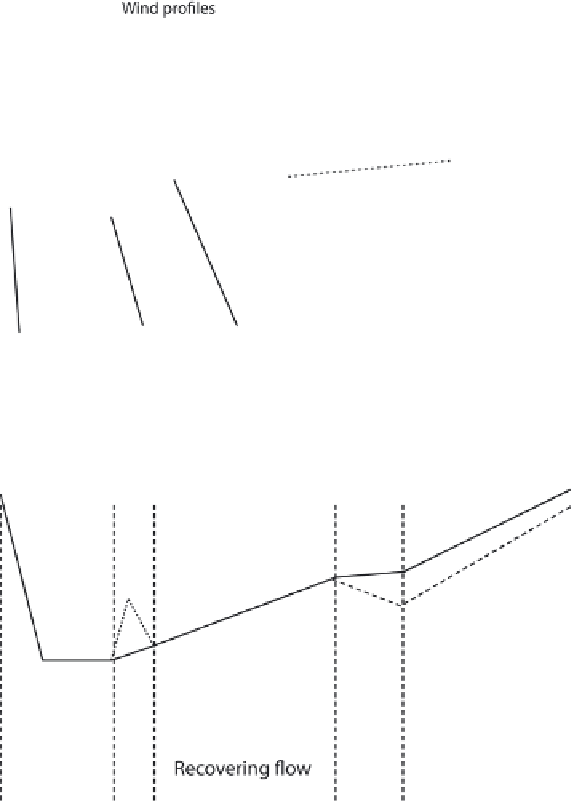Geoscience Reference
In-Depth Information
significantly above threshold (McKenna Neuman, Lan-
caster and Nickling, 2000).
Separation of airflow at the brink of the lee face leads
to grain fall from the overshoot of saltating grains trans-
ported up the windward slope. The rate of deposition by
grainfall decreases exponentially with distance from the
brink of the lee face (Figure 19.13), so that most of the
sediment is deposited within 1 m of the brink (Nickling,
McKenna Neuman and Lancaster, 2002). Grain flows oc-
cur when grainfall deposits build up so that the lee slope
is steepened above the angle of repose and fails, initiating
a grain flow or avalanche. The frequency of grain flows
is dependent on the wind speed and sand transport rate
for the period preceding their initiation. The interval be-
tween grain flows decreases exponentially with incident
wind speed from about 60 minutes at 5 m/s to 8 minutes
at 8 m/s; the magnitude of the flows is inversely propor-
tional to the interval between flows (Breton, Lancaster
and Nickling, 2008).
Seasonal patterns of erosion and deposition measured
on linear and star dunes show that the greatest amount of
change occurs when winds change direction seasonally
air flow
Wake region
Turbulent shear zone
Internal boundary layer
I
0
10
5
x/h
Turbulent shear
layer
Turbulent stress
maximum
Separation cell
(a)
Intermittent
erosivity
(b)
Erosivity
(a)
(b)
Separation
Reattachment
Interaction zone
(a) no stagnation at dune toe; (b) stagnation at dune toe














